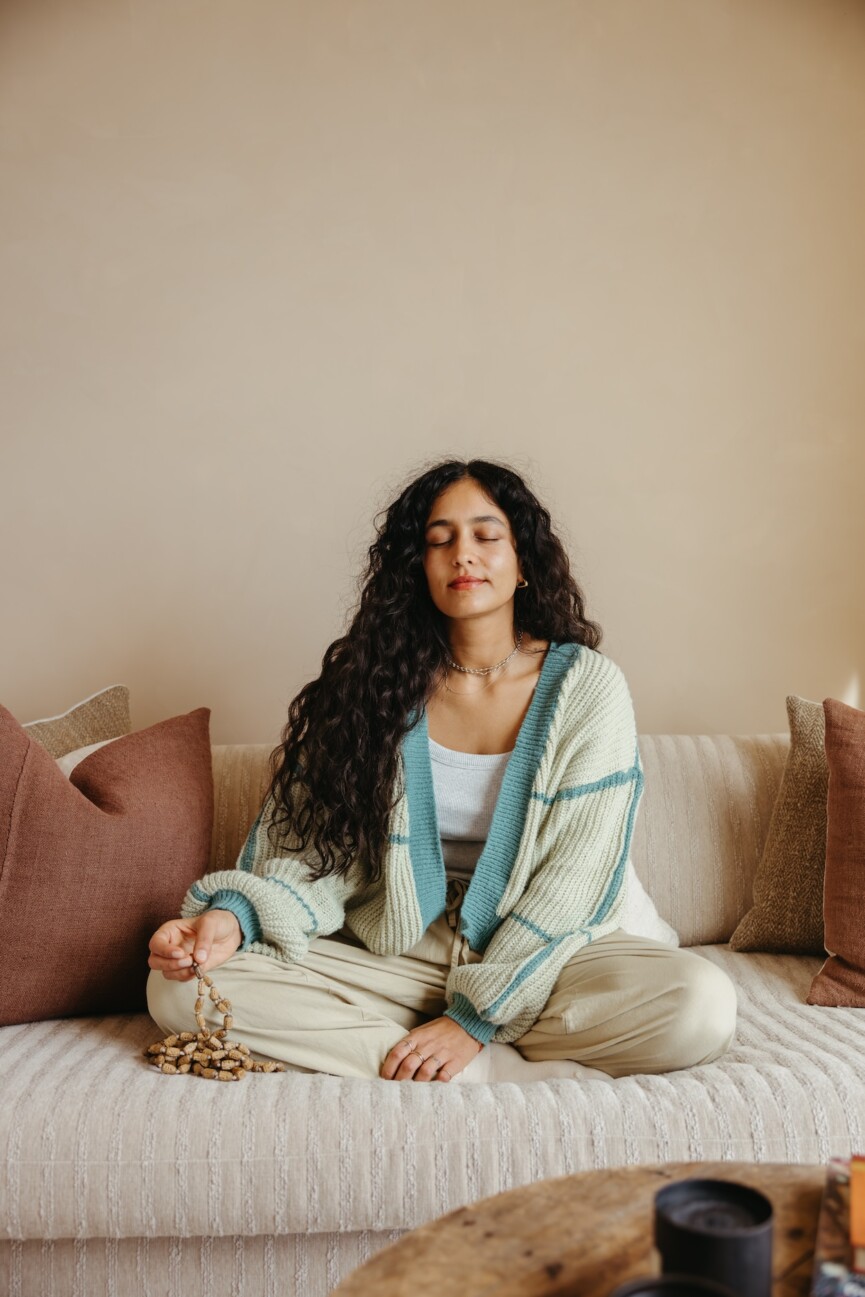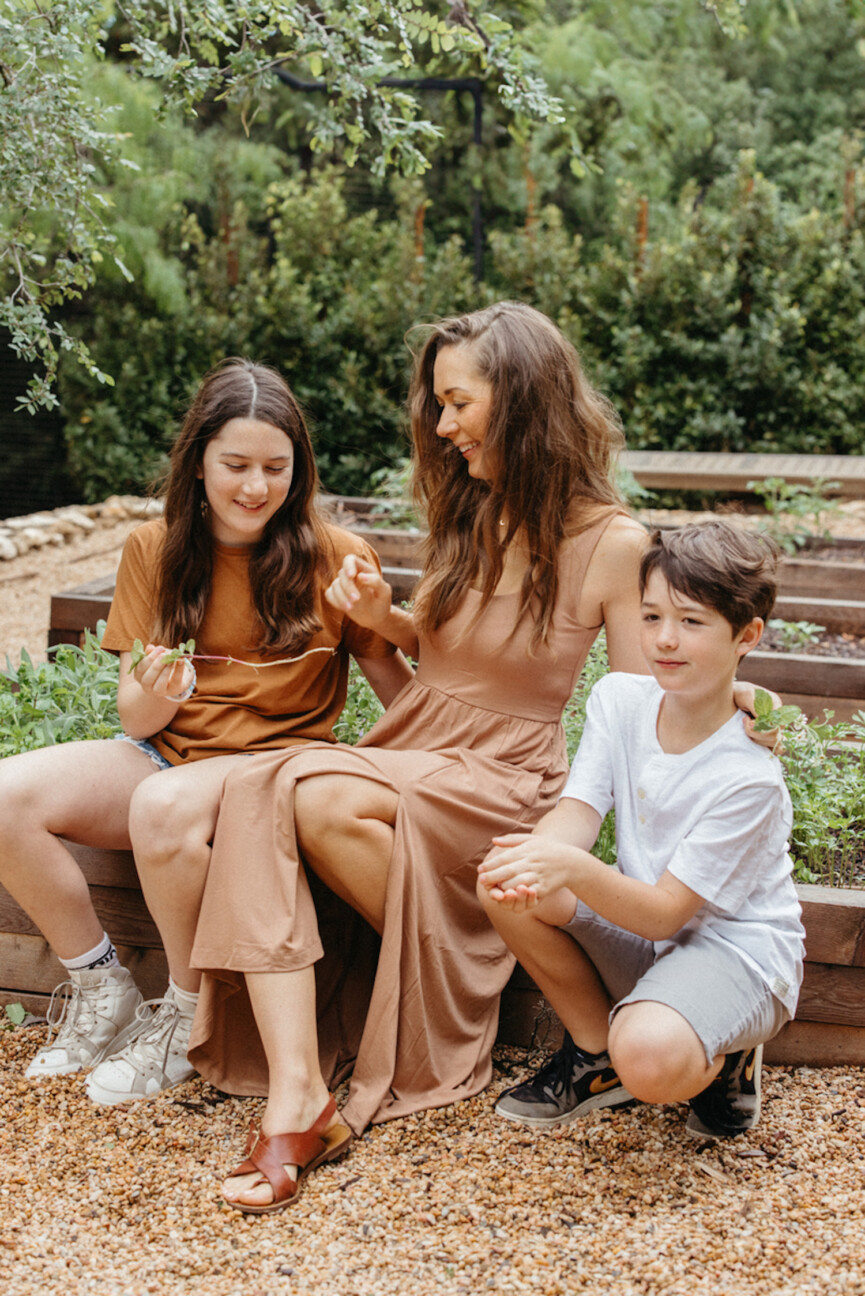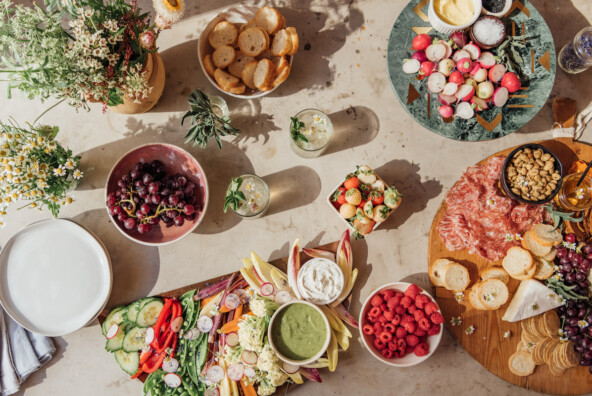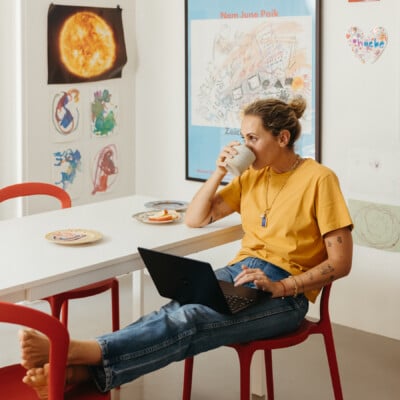As a self-proclaimed health enthusiast, I’m forever curious about other folks’ wellness practices. And let’s be honest: my Instagram feed delivers. I’m not shy about saving countless health tips, both as market research and for all things personal growth. How has this recently manifested? In an expectation to meditate (trust me, I tried!). But if I’ve learned anything since our second baby was born, it’s that a picture-perfect meditation routine is as out of reach as a full night’s sleep. Instead, you can find me embracing a gentler path to mindfulness—one that fits into the balancing act of my everyday life. Scroll to learn how to be more mindful, the flexible way.
Spoiler alert: being mindful doesn’t require 30 minutes of silent meditation or a complete lifestyle overhaul. It’s about finding moments of presence in the life you’re already living—whether you’re a busy mom, a career-driven professional, or a student burning the midnight oil.

Re-Thinking Your Approach to Wellness
If your reality is more chaos than calm, more sippy cups than singing bowls, you’re in good company. As a mother of two little ones, I’ve wrestled with guilt over my inability to maintain a daily meditation practice. But the reality is, this can feel like trying to force a square peg into a round hole. Instead, the goal is to discover what’s practical for you—in this particular season of life—even if it looks nothing like the curated meditation habits you see on social media. And no, you’re not falling short if you can’t maintain a traditional meditation routine.


Looking at Mindfulness as a Way of Life
From a bird’s eye view, wellness is much like the Mediterranean diet—it’s more of a lifestyle than a specific regimen. Just as the Mediterranean diet focuses on incorporating healthy, balanced eating habits into daily life, it’s best to approach wellness the same way: woven as a general theme into your days, rather than a rigid set of practices. And when in doubt, embrace fluidity. Every day is going to look different (how you’re feeling, what your circumstances are, the length of your to-do list, etc.). One evening’s deep tissue massage is another night’s mocktail hour with good friends. Our health needs are ever-changing.


Understanding Mindfulness in the Context of a Busy Life
Before we dive into practical tips, it’s essential to understand what it means to be more mindful. Mindfulness is simply the practice of being present and fully engaged with whatever we’re doing at the moment. Eating! Exercising! Doing breathwork! It’s about paying attention to our thoughts, feelings, bodily sensations, and surrounding environment—without judgment. The beauty of mindfulness is that it can be practiced anywhere, at any time. You don’t need to light palo santo, unroll your yoga mat, and turn on noise-canceling headphones to tap in.
Mindfulness isn’t just another task on your to-do list—it’s a way of approaching life with greater presence, compassion, and ease.


Embracing Micro-Moments of Mindfulness
One of the most effective ways to be more mindful is to embrace micro-moments throughout your day. These are brief instances where you consciously bring your attention to the present moment. Here are some ways I incorporate these into my daily routine:
- Mindful breathing in the car: On my way to drop my 4.5-year-old at preschool, we practice mindful breathing together. It’s a simple exercise that helps us transition from one part of our day (morning time chaos!) to another.
- Body scan in the shower: I use my shower time to perform a quick body scan, paying attention to how each part of my body feels. This practice allows me to cultivate body kindness and check in with my physical well-being.
- Mindful eating with family: During dinner, we do our best to practice mindful eating. We take a moment to appreciate our food, noting its colors, flavors, and textures. This encourages presence, gratitude, and awareness of our hunger cues!
- Gratitude pause before bed: Just before sleep, take a minute to reflect on three things you’re grateful for from the day. This—albeit cliche—practice shifts your focus to the positive, promoting a peaceful state of mind.
- Mindful listening during conversations: Practice giving your full attention when speaking with family, friends, or colleagues. This is much easier said than done! Notice the urge to interrupt or let your mind wander, and gently bring your focus back to truly hearing the other person.
- Nature appreciation moment: Take a brief pause during your day to look out a window or step outside. Observe the sky, trees, or any natural elements around you, allowing yourself to connect with the world beyond your immediate tasks.


Leveraging Technology for Mindfulness
These days, technology is both: a distraction and a tool for mindfulness. I’ve found that using the right apps can significantly support my journey to be more mindful. I’m currently crushing on Superhuman. This app offers quick, guided mindfulness exercises—which they call activations—that I can easily fit into my day. Whether I’m breastfeeding, unloading the dishwasher, or taking a brief walk around the block, there’s motivational audio for every need.


Incorporating Mindfulness Into Daily Activities
Ultimately, being more mindful doesn’t require adding new activities to your day. It’s about approaching your existing activities with greater awareness. Here are some ways to do this:
Mindful cooking
Turn cooking or meal prep into a meditative practice. As you chop vegetables or stir a pot of pasta, focus fully on the task at hand. Notice the colors and textures of the ingredients, the sounds of cooking, and the aromas filling your kitchen. This makes the process more engaging and infuses your food with intention and care.
Mindful commuting
Whether you’re driving or taking public transport, use this time to practice mindfulness. Notice the sensations of your body in the seat, the sounds around you, or the rhythm of your breath. Aim to do this before you turn on a podcast, music, or make a phone call.
Mindful working
Take short breaks during your workday to practice mindfulness. Set an intention at the start of each task, and pause briefly between tasks to reset your focus. Time batching is a great tool for this!
Mindful parenting
When possible, engage fully with your children during playtime. Notice their unadulterated imagination, creativity, and joy. These moments of connection are perfect opportunities for mindfulness.


Overcoming the Pressure of Perfect Mindfulness
Mindfulness is a practice, not a destination. Instead of aiming for an idealized version of mindfulness, enjoy the journey. It’s not supposed to be perfect. It isn’t about how long you can sit still or how empty you can make your mind. It’s about consistently returning to the present moment, even if it’s for a few seconds at a time. By focusing on the process (rather than the outcome), you can cultivate a more genuine mindfulness practice—one that enhances your resilience.
How can you create a sustainable mindfulness practice?
Your meditative habits should fit your life, not the other way around.
- Start small: Begin with just one or two mindful moments a day and gradually increase as it becomes more natural.
- Be flexible: Your mindfulness practice should adapt to your changing circumstances. What works this week might not work next week, and that’s fine.
- Find your anchors: Identify specific daily activities that can serve as reminders to be mindful. This could be turning on the coffee maker, opening your computer, or stepping outside.
- Share your experience: Talk to your family, friends, or colleagues about your efforts to be more mindful. They might offer support or even join you in the practice!


Step Aside, Unrealistic Standards
Remember, the goal of mindfulness isn’t to achieve a state of constant zen or to completely eliminate stress from your life. It’s about developing a more aware—and accepting—relationship with your daily activities and responsibilities. By incorporating these practical tips into your routine, you can be more mindful… without feeling like you’re scrambling to meet an unrealistic standard.






